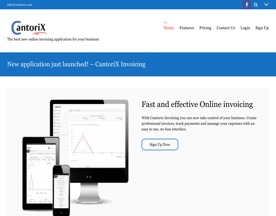Hello dear readers! Let’s embark on a little journey back in time. Picture this: It’s a regular workday, and you’re surrounded by towering stacks of paperwork. The room is filled with the soft hum of fax machines and the incessant clicking of calculators. You’re sifting through invoices, cross-referencing them with payment receipts, and making manual entries into ledgers or Excel spreadsheets. It’s tedious, time-consuming, and frankly, a bit overwhelming.
Now, snap back to the present. We’re in an age where tech innovations are revolutionizing every facet of our lives. From how we communicate and shop to how we manage our finances, technology is reshaping our world. And the business realm is no exception.
In the midst of this technological renaissance, the accounts receivable process, automation has emerged as one of the most influential and transformative innovations. If you’re new to this term or have only heard it in passing, you might be wondering, “What’s the big deal?” Well, let me assure you, the hype is real, and by the end of this blog post, you’ll understand why.
But first, a quick primer: Accounts receivable is essentially the money owed to a company by its customers. It sounds simple enough, right? But anyone who’s been involved in managing AR knows that it’s anything but. Keeping track of who owes you what, ensuring timely payments, credit management, handling discrepancies, and bad debt, and maintaining accurate records can quickly become a logistical nightmare.
Enter accounts receivable automation. This game-changing approach manual accounts receivable processes uses technology to streamline and automate many of the accounts receivable ar. tasks that were once manual and cumbersome. It’s like having a super-efficient assistant who never takes a break and is immune to human errors.
Before we dive into the nitty-gritty of how accounts receivable automation works and its myriad benefits, let’s take a moment to appreciate the journey. From manual ledgers to more automated accounts receivable systems, the world of business finance has come a long way. And as you’ll soon discover, this evolution is not just about convenience; it’s about ensuring businesses—big and small—can thrive in a competitive, fast-paced world.
So, fasten your seat belts, dear readers. We’re about to delve deep into the world of accounts receivable automation software, uncovering its ins and outs, and exploring why it’s rapidly becoming an indispensable tool for modern businesses. Let’s get started!
Accounts receivable automation streamlines financial operations, reduces errors, and accelerates payment processes, leading to healthier cash flow for businesses.

What is Accounts Receivable Automation?
Accounts receivable (often abbreviated as AR) refers to the outstanding invoices a business’s cash flow or company has or the money it is owed by its clients. In traditional setups, managing these receivables involved manual tracking of invoices, sending reminders for overdue customer payments, and manually reconciling payments once they came in.
Accounts receivable automation, on the other hand, is the process of using software and technology to streamline, organize, and keep accounts receivable team to automate these tasks. This ensures that businesses can track their outstanding and collections process invoices more efficiently, send reminders automatically, and reconcile payments in real time.
Key points:
- Accounts receivable refers to outstanding invoices or money owed by clients.
- Traditional AR management involves manual processes.
- Automation streamlines these processes using software and technology.

Why is AR Automation Essential for Modern Businesses?
1. Efficiency and Time-Saving
The most glaring benefit of AR automation is the significant time savings. Instead of manually tracking every single invoice, businesses can automate payment reminders and now get real-time updates on their outstanding payments. No more sifting through stacks of papers or updating Excel sheets!
2. Reduced Errors
Human error is inevitable. But when it comes to financial operations, even the smallest mistake can lead to significant losses. Automation minimizes these risks, ensuring that your financial records are accurate.
3. Improved Cash Flow
With automated reminders and real-time reconciliations of payment options, businesses can receive their payments faster. This leads to a healthier cash flow, which is essential for the growth and stability of working capital of any business.
Key points:
- AR automation saves time and boosts efficiency.
- It minimizes the risk of human errors.
- Automation ensures faster payments and improved cash flow.

Software Tools for Accounts Receivable Automation
In today’s digital age, there’s an abundance of software tools available to help businesses automate their accounts receivable processes. These tools not only simplify and streamline AR operations but also introduce a level of accuracy and efficiency that’s hard to achieve with manual processes. But with so many options out there, how do you choose the right one for your business? To help you navigate this landscape, here’s an expanded list of some of the top AR process automation tools, along with insights into their features and benefits.
QuickBooks Online
A household name in the world of accounting software, QuickBooks Online offers more than just basic bookkeeping. Its AR automation features are robust and comprehensive.
- Features: Automated invoice generation, payment reminders, real-time payment tracking, and integration with various payment gateways.
- Why it’s useful: Apart from its wide range of financial tools, QuickBooks Online offers seamless integration with other business software, making it a versatile choice for businesses of all sizes.
FreshBooks
FreshBooks has made a name for itself with its user-friendly interface and a focus on process customer payments, helping businesses get paid faster.
- Features: Customizable invoices, automated expense tracking, built-in time tracking, and automated payment reminders.
- Why it’s useful: Especially favored by freelancers and small businesses, FreshBooks simplifies the invoicing and payment process, ensuring businesses spend less time on paperwork and more time on their core operations.
Xero
Xero is a cloud-based accounting software that’s been gaining traction, especially among small to medium-sized businesses.
- Features: Real-time cash flow insights, automated invoice reminders, multi-currency accounting, and easy bank reconciliation and cash application.
- Why it’s useful: With its intuitive design and powerful AR automation features, Xero makes it easy for businesses to keep their finances in order, even with minimal accounting experience.
AR Automation by Quadient
An up-and-comer in the AR automation space, AR Automation by Quadient focuses exclusively on making the customer invoice whole accounts receivable management process as efficient as possible.
- Features: Predictive analytics for forecasting payments, automated communications for payment reminders, and a centralized dashboard for AR management.
- Why it’s useful: AR Automation by Quadient’s predictive analytics can be a game-changer, helping businesses identify potential payment delays and address them proactively.
Bill.com
Bill.com is a comprehensive credit card payments management platform that handles both accounts payable and receivable, making it a one-stop-shop for many businesses.
- Features: Electronic invoicing, automated approval workflows, integration with major banks, and accounting software compatibility.
- Why it’s useful: The dual focus on AP and AR makes Bill.com a holistic solution for businesses looking to automate their entire financial workflow.
Sage Intacct
A heavyweight in the accounting software world, Sage Intacct offers a range of tools tailored for larger businesses and enterprises.
- Features: Multi-dimensional data analysis, automated transaction matching, and customizable AR workflows.
- Why it’s useful: For businesses with complex financial needs, Sage Intacct offers a level of customization and depth that can be invaluable.
When choosing an right AR automation software tool, it’s essential to consider factors like your business size, the complexity of your financial operations, and your budget. Remember, the right tool should not only automate tasks but also provide insights and analytics to help you make more informed financial decisions. Always opt for a tool that aligns with your business’s specific needs, and don’t hesitate to take advantage of trial periods or demos to test out software before committing.

FAQs on Accounts Receivable Automation
Navigating the world of accounts receivable automation can bring up a plethora of questions. Whether you’re new to the concept or just looking to deepen your understanding, this FAQ section aims to address some of the most common queries that business owners and finance professionals might have. Let’s dive in!
1. Is AR automation expensive?
At first glance, investing in AR automation tools might seem like a hefty expense, especially for smaller businesses. However, it’s essential to view this as an investment rather than a cost. While there might be initial setup and software purchase costs, the long-term benefits – such as time savings, reduced errors, faster payments, and decreased administrative overhead – often outweigh these initial expenditures. Moreover, many software providers offer tiered pricing based on features and the number of users, allowing businesses to choose a plan that fits their budget and needs.
2. Can small businesses benefit from AR automation?
Absolutely! While larger corporations might have the resources for dedicated accounts receivable departments and finance teams, small businesses often operate with limited staff and resources. AR automation can be a game-changer for them. Automated systems can handle invoice generation, payment reminders, and even payment processing and reconciliations, freeing up valuable time for small business owners to focus on growth and other core operations.
3. Is it challenging to transition to an automated system?
Change can be intimidating, especially when it comes to integral business operations. However, with the right tools and training, the transition to an automated AR system can be relatively smooth. Most software providers offer comprehensive training, user-friendly interfaces, and dedicated customer support to assist businesses during the transition phase. Plus, many systems can integrate with existing accounting software, ensuring continuity and minimizing disruption.
4. How secure is AR automation?
Given the financial nature of most automated accounts receivable system software, security is a paramount concern. Reputable AR automation software providers prioritize security, employing encryption, multi-factor authentication, and regular security audits to protect user data. Always research and choose software with robust security features and a good track record.
5. Will AR automation lead to job losses?
This is a common concern, but it’s essential to view AR automation as a tool that enhances productivity rather than replaces human roles. While automation can handle repetitive tasks, human judgment, relationship management, customer experience, and strategic decision-making remain irreplaceable. Instead of job losses, staff can be redirected to more value-added tasks, fostering growth and innovation.
6. Can I customize the AR automation process to fit my business needs?
Absolutely! Many AR automation tools offer customizable features, allowing businesses to tailor the software to their specific processes and needs. This might include custom invoice templates, multiple payment options, personalized reminder emails, or specific payment term settings.
7. What happens if there’s a discrepancy or error in the automated system?
No system, no matter how advanced, is immune to potential hiccups. However, most AR automation software provides detailed audit trails and discrepancy reports. This ensures that any errors or inconsistencies can be quickly identified and rectified. Plus, having dedicated customer support from the software provider can be invaluable in such situations.
8. How does AR automation handle late payments?
One of the standout features of AR automation is its ability to send automated payment reminders. If a payment is overdue, the system can be set up to send reminder emails or notifications at specified intervals, reducing the manual effort of chasing payments. Some systems also integrate automated accounts with penalty or interest calculations for late payments, ensuring that businesses are compensated for any delays in collecting payments.
9. Can AR automation integrate with other business software?
Yes, many AR automation tools are designed to seamlessly integrate with popular accounting software, CRM systems, and other business tools. This ensures that data flows smoothly across different platforms, providing a holistic view of business operations days sales, and finances.
10. Is there a steep learning curve for AR automation software?
While any new software requires some learning, many AR automation tools prioritize user-friendliness. With intuitive interfaces, guided tutorials, and dedicated support, most users find the transition to be more straightforward than anticipated. Remember, the goal of these tools is to simplify and streamline, not complicate!
I hope these FAQs shed some light on the world of accounts receivable automation. If you’re on the fence about integrating an AR automation solution into your business operations, remember that the long-term benefits often far outweigh the initial learning curve or investment. Embracing this technology can set your business on a path to enhanced efficiency, accuracy, and growth.

Conclusion
As we wrap up, let’s reflect on what we’ve uncovered. Accounts and receivable automation software isn’t just a fancy buzzword; it’s a game-changer in the world of business operations. By embracing this technology, businesses can save time, reduce errors, and ensure a steady cash flow.
If you’re still relying on manual processes, it might be time to consider making the switch. The future of business is digital, and AR automation is leading the charge. So, why wait? Dive into the world of automation and watch your business thrive!















